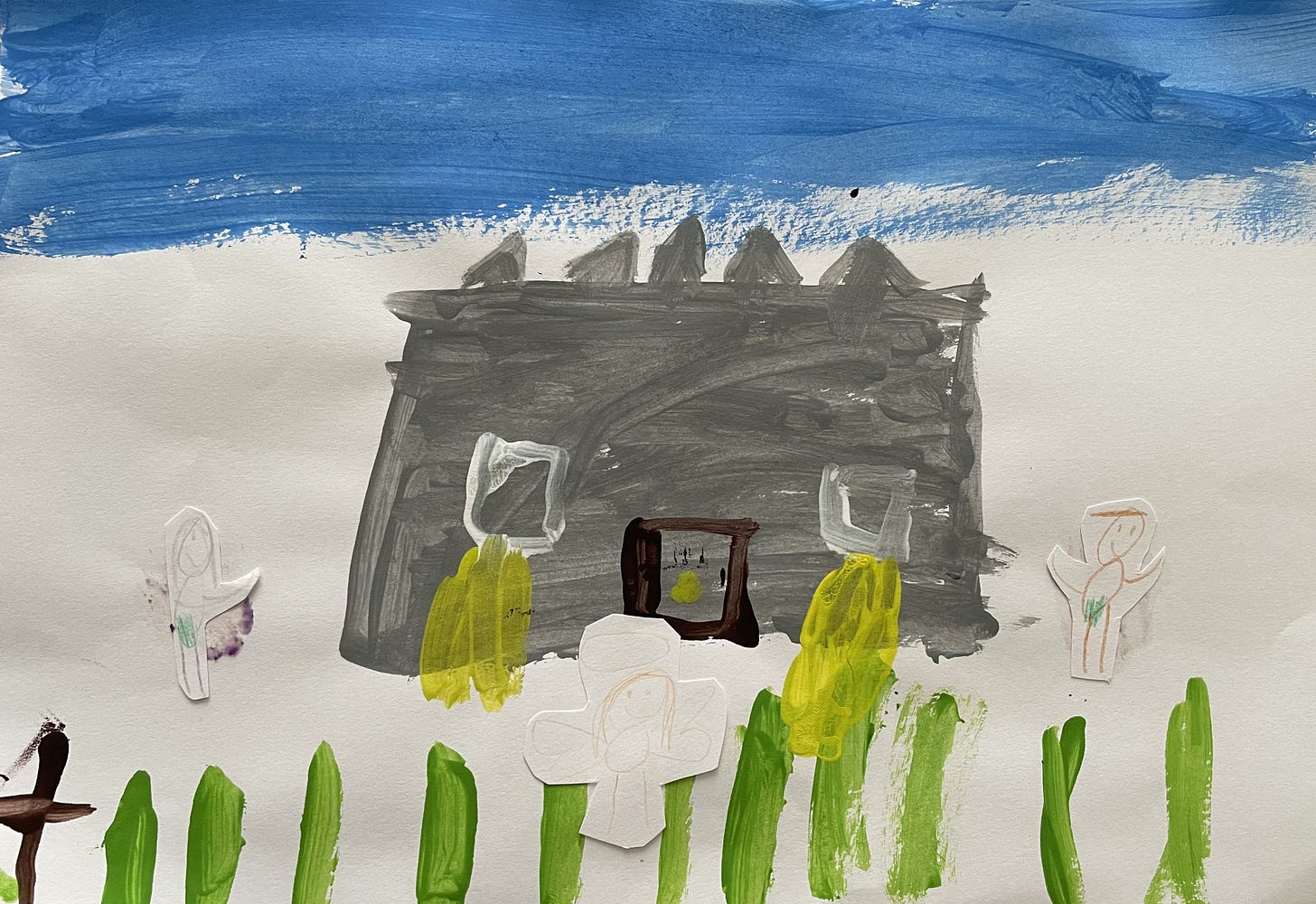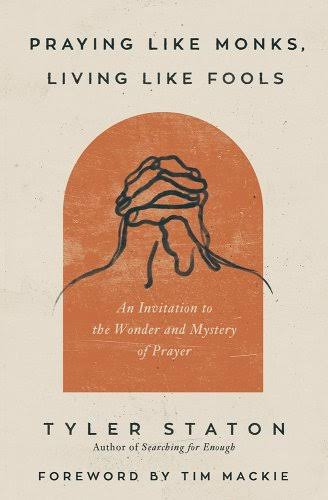Take off your fig leaves
Inspired by a second graders's drawing and chapter 4 in Praying Like Monks, Living Like Fools by Tyler Staton.
As I have mentioned before in this series on prayer and fasting, prayer is one of the spiritual practices many Christians struggle with. There are many fantastic teachings and resources on how to enrich our prayer lives, and the one I want to highlight today is a book called Praying Like Monks, Living Like Fools by Tyler Staton from Bridgetown Church in Portland. If you have not yet discovered the “Bridgetown Audio” podcast where each week’s sermons are posted, I highly encourage giving it a listen. If you scroll through the sermons, there are many on the topic of prayer that I would recommend starting with. The church website also has a treasure trove of resources on prayer (click here) and there is an app called Inner Room that helps in implementing the daily prayer rhythms they recommend.
Chapter four of his book is titled “Search me and Know Me” and focuses on the importance of confession in prayer. The book as a whole teaches on prayer using the structure of the “Lord’s Prayer” that Jesus used in instructing his disciples how to pray in Matthew 6: 5-15. If Jesus gives instructions on something we need to pay attention. The first part of the “Our Father” prayer, as Catholics call it, is to recognize collectively that God is *our* Father. Every single one of us. We are taking ourselves and our personal needs out of the prayer right now, and declaring unity among believers when calling God “Our Father.” When we then “hallow His name,” we are proclaiming His holiness, that He is set apart, the One and only true God. Staton states, “ ‘Our Father’ is a reminder of God’s intimacy; ‘hallowed’ is a reminder of His separateness, His majesty, His incomprehensible greatness.” The act of hallowing God should lead us into confession, as we realize His holiness and our lack of it.
Confession must be an integral part of our prayer life. Sanctification is a life-long process, and sin remains a struggle for every Christian. David is remembered as being a “man after God’s own heart,” yet also for committing some major no-no sins. How can both of these things be true? David was a confessor. In Psalm 139 he asks the Spirit to search him and reveal sin. That is a dangerous prayer. Staton says, b“Confession is a terrifying gift, which sounds like a contradiction because it is.”
We know from Genesis 3 and beyond that when we sin we often hide from God. Adam and Eve covered themselves in fig leaves to hide from the God who would soon cover them Himself with fresh animal skins that directly foreshadow the ultimate covering of sin through Christ’s blood. “When David realized he was naked (in sin), he didn’t pick up fig leaves; he ran to the Father.” (p.83) Spiritual maturity is not becoming one who needs to confess less, but one whose posture is that of more confession.
The part of the chapter that truly grabbed me is subtitled “Naked Revival.” I love shocking statements that turn into deep truths. Staton talks about revival happening not when people decide it should, but with people taking off their fig leaves in front of God and each other. The mental picture is a church for people that take off their fig leaves…
The day before I read these words I was having lunch at our homeschool co-op and the daughter of one of my dear friends showed us her painting. We were giggling at the time at the thought of a church of fig-leafed people, and how she was singing “God Help the Outcasts” from the Hunchback of Notre Dame while she painted it. The next morning as I read about “naked revival” I was floored with the prophetic nature of this little girl’s painting. We need churches where people are free to take off their fig leaves, to humble themselves before God and their church families. We need to confess to others where we have wronged them, and be willing to accept it when others confess to us. These are hard things, I know. But if we are to be a church of unity under “Our Father,” we need to start stripping off those fig leaves.
Purchase the book here




